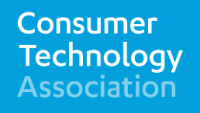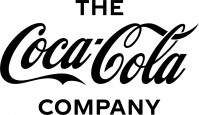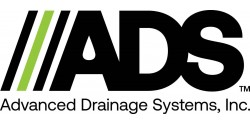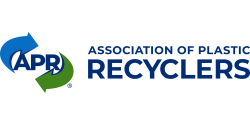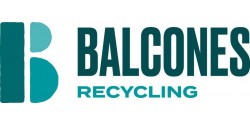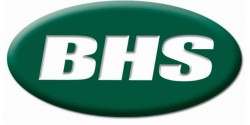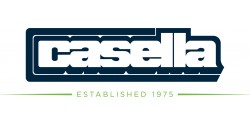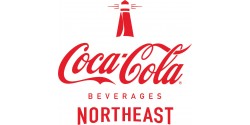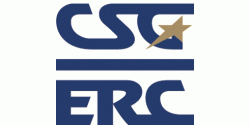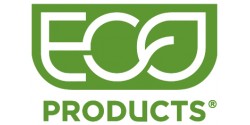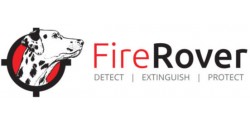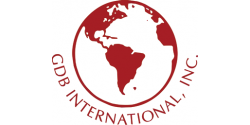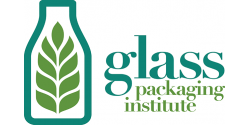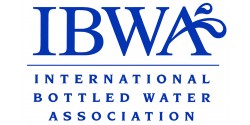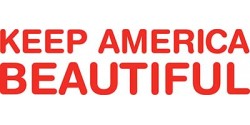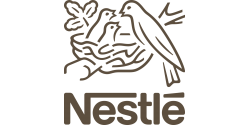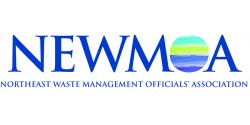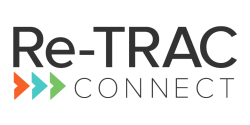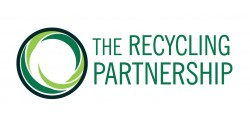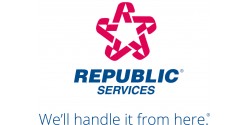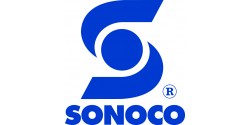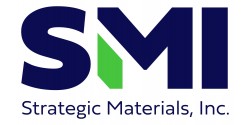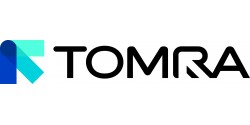December 2013
MEMBERSHIP
Renewing Sustaining Members
- ISRI
- Electronics Recycling Directory
Renewing Supporting Member
- Housatonic Resource Recovery Authority
NERC NEWS
- The Reuse Marketplace Website Displays a Wide Variety of Items
- Samsung Receives Award for Distinguished Environmental Leadership
- Panasonic Continues Support for State Electronics Challenge
- Second Tribal Participant Joins the State Electronics Challenge
- Progress Made on Green Specifications
- Advisory Members Meet
- The Public Library – Reuse in Action: A NERC Blog Worth Repeating
NEWLY POSTED
- Farm Compost Marketing Case Studies & Other Resources
- Recycling Business Assistance Guide
- Green Procurement – It’s Easy as 1-2-3
STATE NEWS
VERMONT
ADVISORY MEMBER NEWS
OF GENERAL INTEREST
|
NERC's mission is to advance an environmentally sustainable economy by promoting source and toxicity reduction, recycling, and the purchasing of environmentally preferable products and services. |
State and Advisory Member Updates, as well as articles of General Interest and guest blogs are provided as submissions to NERC and may not reflect the policy or position of the Northeast Recycling Council, Inc.
NERC is an equal opportunity provider and employer.
MEMBERSHIP
We are delighted to thank renewing Sustaining Members ISRI and the Electronics Recycling Directory, as well as renewing Supporting Member the Housatonic Resources Recovery Authority. Thank you to all of our members and individual supporters.
A hallmark of NERC is the strength of multi-stakeholder involvement and problem solving. This is a direct result of the active participation and support of NERC’s Advisory Members. NERC has more than 40 Advisory Members. To see a complete listing and the benefits of membership, visit the NERC Advisory Membership web page.
The broad spectrum of interests represented by NERC’s Advisory Members and Board Members and their willingness to participate significantly contribute to the unique and important role that NERC plays in recycling in the region.
NERC NEWS
The Reuse Marketplace Website Displays a Wide Variety of Items
Some of the items you’ll find posted on the Reuse Marketplace may interest and surprise you. Take a look! Right now, the available items include: a pallet jack; recycling toters; a telephone system; reclaimed lumber; scrap fabric; and more. Wanted items include surplus, used, or off-spec lanyards, packing peanuts, and a microwave.
Take advantage of this free website to post reusable or surplus items you want to get rid of, as well as those you would like to obtain.
The Reuse Marketplace reduces the disposal costs and carbon footprint of businesses, government, institutions, and non-profits!
For more information, contact Mary Ann Remolador, NERC’s Assistant Director & the Reuse Marketplace Administrator.
Samsung Receives Award for Distinguished Environmental Leadership
At the recent NERC conference, Dinah Rhee, Enviro nmental Specialist, Samsung Electronics America, was presented with an award by NERC Board President Robert Isner, in recognition of Samsung's continuing support of the State Electronics Challenge as a Distinguished Sponsor. Samsung has been a Distinguished Sponsor of the Challenge since 2010.
nmental Specialist, Samsung Electronics America, was presented with an award by NERC Board President Robert Isner, in recognition of Samsung's continuing support of the State Electronics Challenge as a Distinguished Sponsor. Samsung has been a Distinguished Sponsor of the Challenge since 2010.
Panasonic Continues Support for State Electronics Challenge
 Panasonic has once again stepped forward and demonstrated its commitment to environmental stewardship by renewing its sponsorship of the State Electronics Challenge. This marks the fourth consecutive year that Panasonic has provided support for the Challenge.
Panasonic has once again stepped forward and demonstrated its commitment to environmental stewardship by renewing its sponsorship of the State Electronics Challenge. This marks the fourth consecutive year that Panasonic has provided support for the Challenge.
Second Tribal Participant Joins the State Electronics Challenge
Last month we reported that the Challenge had grown by five Partners in two months, representing more than 166,000 employees. In October, not only did four more Partners join, but the total number of employees participating in this free, national program, increased to 169,000. And, this includes the second Tribal nation to join the Challenge: The Santa Ynez Band of Chumash Indians (CA).
The State Electronics Challenge is a free program that provides technical assistance, strategies, and tools that assist Partners in:
- Buying green office equipment, using the EPEAT® rating system
- Using equipment efficiently by reducing energy and paper consumption
- Recycling unwanted equipment responsibly using certified recyclers
Participants—known as Partners—are state and local government agencies, tribal governments, any school, college or university, non-profit organizations, and other public entities that sign up to join in the program.
Support for the State Electronics Challenge is made possible by a grant from the U.S. Environmental Protection Agency Great Lakes Restoration Initiative, and sponsorship by Samsung Electronics, Panasonic, the ISRI R2/RIOS program, Sims Recycling Solutions, and the Consumer Electronics Association. For more information, contact Lynn Rubinstein.
Progress Made on Green Specifications
Draft product specifications for toner cartridges, multipurpose paper, and office supplies are planned to be distributed for public comment by the end of December. An announcement will be made in the January Email Bulletin, as well as in the Breaking News section of the NERC website.
Development of these specifications included national conversations with teams of green purchasing experts, a purchaser survey, and interviews with product retailers.
For more information, contact Mary Ann Remolador, NERC’s Assistant Director.
 Advisory Members Meet
Advisory Members Meet
Every year, NERC’S Advisory Members have an opportunity to get together to discuss their priorities for NERC and ideas for NERC activities and projects. They meet with the NERC Executive Committee in a closed-door session as part of the NERC fall conference.
This year, a wide array of members were represented (left to right, front row): Gordon Burgoyne, ECOvanta; Dinah Rhee, Samsung; Alan Sabino, Casella Waste Systems; Robert Isner, Connecticut Department of Energy & Environmental Protection (NERC Board); Rick Watson, Delaware Solid Waste Authority (NERC Board); Jen Iannucci, Housatonic Resource Recovery Authority; Marie Kruzan, Association of New Jersey Recyclers; Abbie Webb, Casella Waste Systems; Paul Nonnenmacher, Connecticut Resources Recovery Authority; Jay Kilbourn, NEBRA; Gunther Wellenstein, City of Lowell (left to right, back row): Tyler Finnegan, Metech; Wayne Bowen, Pennsylvania Recycling Markets Center; Cheryl Reedy, Housatonic Resource Recovery Authority; Peter Dion, UNTHA Shredding; Chip Foley, Steel Recycling Institute; Roger Guzowski, Connecticut Resources Recovery Authority; George MacDonald, (Maine Department of Environmental Protection)
Missing from photo: Rick Penner, Re-TRAC Connect; Lynn Rubinstein, NERC Executive Director
The Public Library—Reuse in Action - A NERC Blog Worth Repeating
If you haven’t yet been to the NERC Blog we hope you will sign up to receive our articles regularly. We post every Tuesday and occasional Thursday, so we promise not to fill up your inbox! To entice those of you who haven’t been to the NERC Blog yet, we offer this article on reuse by NERC staff Athena Lee Bradley posted on Tuesday, October 28, 2013.
The Public Library—Reuse in Action
My work at NERC takes me to a wide range of communities and allows me to see firsthand how people practice reuse, recycling, and composting. During my latest travel experience in Washington County, New York I conducted a survey of local residents to find out about their home organics management practices (composting, grasscycling, etc.). Being in the small town of Greenwich (population 4,896), the transfer station and the public library were likely spots to meet and survey residents. My first stop was the transfer station where I spent two hours asking my survey questions.
Next stop the library. Over the course of two days I spent about five hours in the Greenwich Free Library. The library proved to be a great place to talk with residents. It presented a relaxing, happy, and contemplative environment. While I stood in the library foyer, all manner of people came and went—children, teenagers, adults, and older adults.
My survey taking also allotted time for exploring the library, doing a lot of thinking, and of course reading. Libraries are one of those great foundations of learning and opportunity that we take for granted. They are there, many of us use them, but it seems that in so many communities libraries struggle to retain funding and government support.
For those of us in the recycling business, libraries are the very essence of reuse. For hundreds and hundreds of years libraries have promoted the reuse and sharing of books and knowledge. People borrow books, books on CD, music CDs, DVDs, and even e-book readers. Library book sales are popular in most communities. At the Greenwich Library there is a free paperback book exchange. The Greenwich Library offers a “welcome bag” for children containing a free children’s book and a library card application. For Halloween, a “Trick or Treat” event is sponsored where children can come for cider, a donut, and a free book.
Studies indicate that public libraries offer a tremendous benefit to communities and a high rate of return for tax dollars. Libraries provide a place of refuge for children who need a safe place, for teenagers to study, and for the elderly and others who may have difficulty navigating our increasingly complex and technologically oriented world. As institutions, our libraries reach people who have fallen behind in today’s economy; students, the unemployed, and others can go to the library to search for employment opportunities, apply to college and training programs, and more. Libraries also benefit authors, as they are frequently the only place where the writings of lesser known authors can be found. Unless it's a bestseller, books seldom remain in bookstores for long. Without permanent acquisition by libraries, the works of many authors would disappear.
Today’s libraries offer computer literacy classes, skills development courses, and workshops on every subject imaginable. Libraries play a vital role in helping adults upgrade their skills and conduct employment searches and they provide resources for immigrants to learn English and to learn about our country. Computers and other technological resources are made available to those who may not have access to a computer or an internet connection in their home. And, of course, libraries foster reading enthusiasm and literacy skills in young people.
Of course, e-book sales are growing exponentially and the Internet plays an ever increasing role in our quest for information and research, adding fuel to those who question the role that public libraries play in our increasingly technologically oriented society. I confess that I enjoy my Kindle and Amazon makes it so easy to download books. Of course, e-books offer the environmental benefit of using less paper, although I haven’t run across a study which compares the environmental impacts of e-readers to books.
Nonetheless, I’m firmly in the camp with others who believe that libraries have a continuing  role to play in our society. Librarians still play a vital role in answering reference queries. Public program offerings at libraries continue to increase, offering free and low costs classes on a range of topics. Libraries have branched out to offer art shows and some even have coffee shops associated with them. When I was at the Greenwich Library, paintings by the well-known folk artist Art Poulin were on Exhibit. Libraries offer a free or low cost space for nonprofit and communities groups to meet and hold events. Libraries are dynamic and provide a versatile community center accessible by anyone. Library-sponsored book groups have had a huge impact on fostering reading. Libraries typically get new releases of books and DVD's, along with music.
role to play in our society. Librarians still play a vital role in answering reference queries. Public program offerings at libraries continue to increase, offering free and low costs classes on a range of topics. Libraries have branched out to offer art shows and some even have coffee shops associated with them. When I was at the Greenwich Library, paintings by the well-known folk artist Art Poulin were on Exhibit. Libraries offer a free or low cost space for nonprofit and communities groups to meet and hold events. Libraries are dynamic and provide a versatile community center accessible by anyone. Library-sponsored book groups have had a huge impact on fostering reading. Libraries typically get new releases of books and DVD's, along with music.
According to the American Library Association (ALA), in 2009, more than 1.59 billion people visited public libraries. Our libraries lent out books 2.4 billion times – more than 8 times for each citizen. More than half of young adults and seniors living in poverty in the United States used public libraries to access the Internet. Public libraries cost just $42 per citizen each year to maintain.
When I was young I pretty much spent all of my non-school time in the library immersing myself in books, periodicals, research. I’ve vowed to spend more time at my public library. While I won’t be giving up my e-reader, I think our libraries deserve our support.
By Athena Lee Bradley
NEWLY POSTED
Farm Compost Marketing Case Studies & Other Resources
Integrating composting practices into farming operations and refining compost production and utilization methods can help farmers better manage farm organic waste, including manure and crop residues. The resulting compost can be applied for on-farm soil benefits and/or sold as a valued-added product. Farm compost operations can also serve as an integral component in community and regional organics management programs.
To help expand and support farm-based compost markets in the Northeast, NERC was awarded a grant from the Northeast Sustainable Agriculture Research and Education (SARE) program. Resources developed by NERC for the project, as well as presentations from seven compost marketing workshops, are posted on NERC’s website. Resources include:
- Making Your Compost Product Work for You
- Model Marketing Plan Template
- Compost Marketing Resource List
NERC also provided technical assistance to farm compost operations, including development of operation-specific marketing plans. Case studies of farm compost operations which participated in NERC’s project are posted on the NERC website:
- Always Something Farm in Croydon, New Hampshire
- Amend Organics in Amherst, Massachusetts
- Aquidneck Farm in Portsmouth, Rhode Island
- Cobblestone Valley Farm in Preble, New York
- Collins Compost in Enfield, Connecticut
- Devine Gardens in Nelson, New York
- Fern Hill Farm Compost in Red Creek, New York
- Holiday Brook Farm in Dalton, Massachusetts
- Mayval Farm in Westhampton, Massachusetts
- Newland Farm in Norton, Massachusetts
- Stone Hill River Farms in Bedford, New York
- Tripp’s Dairy Farm in Westport, Massachusetts
For more information about NERC’s Compost Marketing Project contact Athena Lee Bradley.
Recycling Business Assistance Guide
NERC’s newly revised Recycling Business Assistance Guide for the Northeast States now includes information on tax incentives in each of the Northeast states. The Guide makes it easy for recycling businesses in the Northeast to readily find financing and business assistance resources. In addition to information on tax incentives, it includes information on: state recycling contacts, grant and loan funding programs, technical assistance, general business assistance, disaster debris management, and waste reduction and reuse resources.
For more information, contact Mary Ann Remolador, NERC’s Assistant Director.
Green Procurement – It’s Easy as 1-2-3
The EPEAT® (Electronic Product Environmental Assessment Tool) system identifies electronic office equipment that meets environmental performance criteria. EPEAT covers three groups of products: 1) computer desktops, monitors and notebook computers; 2) imaging equipment including printers, copiers and multifunction devices; and 3) televisions. EPEAT registered products achieve one of three performance ratings – Bronze, Silver, or Gold – depending on the number of environmental performance criteria the product meets.
Identifying products that are EPEAT registered is easy, and a new, simple tutorial that takes you through the process in three steps is now available on the State Electronics Challenge website.
STATE NEWS
VERMONT
Statewide Universal Recycling Symbols Released In Conjunction with America Recycles Day
 At a media event at the Main Street Middle School in Montpelier, Vermont’s Agency of Natural Resources and representatives from Solid Waste Management Districts unveiled the newly developed standardized symbols for recycling, food scraps and trash. These symbols will be used as implementation tools for Vermont’s Universal Recycling law (Act 148), which passed the Vermont Legislature in 2012. The new law requires statewide recycling by July 2015, and diverts food scraps from landfills by July 2020. Once implemented, the law is expected to increase Vermont’s recycling and composting rate from 30% to 60%.
At a media event at the Main Street Middle School in Montpelier, Vermont’s Agency of Natural Resources and representatives from Solid Waste Management Districts unveiled the newly developed standardized symbols for recycling, food scraps and trash. These symbols will be used as implementation tools for Vermont’s Universal Recycling law (Act 148), which passed the Vermont Legislature in 2012. The new law requires statewide recycling by July 2015, and diverts food scraps from landfills by July 2020. Once implemented, the law is expected to increase Vermont’s recycling and composting rate from 30% to 60%.
During the event, members of the Act 148 Working Group, including state agencies, industry representatives, municipal solid waste groups and not-for-profits, unveiled the symbols, explained details of the implementation timeline for the Universal Recycling law, and discussed the importance of the law for the people of Vermont.
“We are excited to unveil these universal symbols in time for America Recycles day. They’re designed to be used everywhere: in public places, schools, businesses, curbside containers, even dumpsters” said ANR Solid Waste Program Manager, Cathy Jamieson. “The goal is to create consistency statewide to encourage recycling, composting, and waste reduction. With universal messaging, Vermont’s communities will find waste management increasingly accessible and approachable.” Jamieson hopes this will contribute towards consistent messaging nationally as several major cities have adopted the same color scheme.
“The Universal Recycling law is great for Vermont. It will create jobs as we build the infrastructure, develop new products, and start new businesses to help us manage our waste as a resource. It will also keep us from having to use costly landfill space for materials that still have value,” emphasized ANR Secretary Deb Markowitz. “Managing our waste as a resource will also reduce Vermont’s greenhouse gas emissions by keeping organic materials out of the landfill.”
According to John W. Casella, Chairman and CEO of Casella Resource Solutions, “The easier we make it to recycle, the more people will recycle. These icons are an important part of this mission. They’re clear, concise, and will be a great tool to help people do the right thing.”
The symbols are freely available for download at the ANR’s Department of Environmental Conservation, Waste Management program website. Solid waste haulers, transfer stations and drop off centers, towns, businesses, schools, and the general public are encouraged to use the symbols to label their recycling, composting and trash containers. The Vermont Agency of Natural Resources is thrilled to unveil the symbols in conjunction with American Recycles Day (Nov. 15), and joins Vermont and our nation in celebrating composting and recycling, and the benefits it provides to our environment, health and economy.
ADVISORY MEMBER NEWS
Green is Good Radio Show to be Broadcast on iHeartRadio
America’s top green radio show, the national weekly “Green is Good” program, has announced that it will now be available to listeners nationwide via the “America’s Talk” lineup on iHeartRadio, effective immediately.
The program provides a spirited forum for a broad selection of leading green businesses and organizations, each taking unique measures to protect and sustain our planet, to share and discuss green business concepts and success stories.
Green is Good has also announced its “sustainability all-star” lineup of guests for the season, and it is a diverse mix of green voices.
Guests interviewed this season will include representatives from many of the best-known brands, businesses and non-profit organizations leading the green charge. Interviews scheduled to air in the next three months include spokespeople from Ford, UPS, Nestle Water, UNICEF, the Green Restaurant Association, “Forks Over Knives” co-author Dr. Pam Popper, and many more.
Hosted by John Shegerian (Chairman and CEO of Electronic Recyclers International, the nation’s leading recycler of electronic waste), Green is Good is also available free on iTunes as a podcast after each episode airs on iHeartRadio.
Previous guests have included spokespeople from Alcoa, Nestle, Glad Products, AT&T, Lipton Tea, the US EPA, the National Wildlife Federation, Ben & Jerry’s, HP/Panasonic, the NRDC, Honeywell, National Geographic, Nascar, General Motors, Best Buy, Goodwill, and FedEx, among many others.
In each show, Shegerian draws his guests into discussions about the environment and what businesses and individuals can do each day to follow the major tenets of sustainability – people, planet and profits.
“We’re very excited to have the opportunity to reach the nearly 70 million iHeartRadio listeners in every city from coast to coast,” said Shegerian. “We’re building up an incredible roster of guests that make for genuinely enlightening conversations. Since we originally launched the show, it’s been an honor and privilege to be able to offer this amazing forum where we meet and share ideas with our guests while inspiring listeners to think and act in more responsible and sustainable ways. The blend of conversations with opinion leaders, green organizations and nonprofits has become on on-air think tank sharing new ways to benefit our planet for businesses and individuals alike. And this is shaping up to be our best season yet!”
OF GENERAL INTEREST
Holiday Waste Reduction Thoughts
- It’s estimated that between Thanksgiving and New Year’s Day, more than 1 million tons of additional waste is generated each week nationwide.
- An estimated 2.6 billion holiday cards are sold each year in the United States, enough to fill a football field 10 stories high.
- Some 38,000 miles of ribbon is thrown out each year--enough to tie a bow around the planet.
- About 40 percent of all battery sales occur during the holiday season.
- Approximately 33 million live Christmas trees are sold in North America every year.
Each year NERC staff presents holiday waste reduction, reuse, and recycling tips in our December Email Bulletin; we offer the following for your consideration this year.
Holiday Greeting Card Tips
Use received greeting cards to make gift tags. Cut out shapes, write a message on the blank side, make a hole in the tag, and attach with ribbon (used of course!) or yarn.
Attractive holiday gift boxes can also be made out of used greeting cards.
Reuse and Reduction of Wrapping Paper
There are loads of ideas for creative reuse of gift cards and wrapping paper.
Saving wrapping paper and reusing it is of course one option. Leftover wrap that is not in good enough shape can be turned into other craft ideas—check out Martha Stewart’s easy craft recommendations. Gift paper can be ironed on a low setting to flatten out wrinkles prior to reuse.
The GiftDecorating blog offers many gift decorating tips, for example, used tissue paper can be made to look artistic by crumpling two sheets of tissue together into a ball and flattening them out together to provide a uniform “artistic” look. Additional tissue paper, old cards, or other wrapping paper can be cut out to add color or decorative images on the “new” wrapping paper.
Shredded wrapping paper makes a nice, colorful paper for stuffing into gift bags, baskets, or for added padding when shipping gifts.
Be sure to store this year’s received wrapping paper, iron as necessary, fold, and store flattened.
Reusable fabric used as gift wrap—done in a traditional art form used in Japan called furoshiki—presents a wonderful artsy option as well.
Rechargeable Batteries—Go Green, Save Money
Remember to include rechargeable batteries with new electronic toys and other gifts requiring batteries. Consider giving a present of a battery charger as well. Rechargeable batteries reduce the amount of potentially harmful materials thrown away and can save money in reduced battery purchases over time. Today’s rechargeable batteries are much better than earlier versions—having nearly three times the capacity of what was on the market just a few years ago. Rechargeable battery capacity equals or exceeds ordinary single-use alkaline batteries and with proper care, should last for 500 to 1,000 charge/discharge cycles. Be sure to encourage proper disposal of used batteries.
Holiday Trees
Consider buying a live tree and planting it. Trees from local growers may present an option and can often be turned into a family outing to pick just the “right” tree. Check with your local solid waste department to find out if there are options for mulching or composting holiday trees.
Sprayed-on artificial snow can be made from environmentally harmful ingredients and is not acceptable in tree mulching programs. As a more environmentally-friendly option, consider sprinkling the tree with some baking powder to make a “snowy” appearance. Homemade holiday decorations out of paper and other natural items can be fun for the family. Fun decorations include stringing a popcorn garland and constructing a paper chain. A holiday “decorating” party for family and friends can be a great holiday opportunity!
Holiday Gift Ideas—Getting Crafty while Reducing Waste
- Collect memorable or significant photos for the gift recipient, make color photocopies, and create a collage.
- Make a recipe booklet of your favorite recipes, family cooking traditions, holiday theme meals, etc. Martha Stewart has a creative recipe booklet design to get you started.
- Write and illustrate a book for young family members or friends.
- Compile a list of memories for the gift recipient and display them in an artistic manner.
- Videotape or record an interview with your parents (or other relatives) about childhood memories, how they met, family history and events, etc., and present it to siblings and other family members.
- Paint a clean, empty wine bottle with non-toxic paint and fill it with olive oil; top with an oil pour spout that can be found at a gourmet cooking shop.
- Bake homemade treats and pack them in a recycled tin or basket.
- Consider putting together a “themed” gift basket. For example, a “breakfast basket” might include maple syrup and pancake mix; a “movie basket” might include a DVD, popcorn, and candy; a “special evening” basket could include wine, cheese, and crackers; or a “gardening basket” could include a trowel, a gardening hat, and some packets of seeds.
- Make a puppet from a sock for a child’s present.
- Clean out the closets and fill an old trunk or suitcase with fun clothing, hats, shoes, and gaudy jewelry for children to play dress-up.
- Make a calendar with photos of family members, family events, and/or local scenery; blank calendar templates can be purchase online.
- Research newspaper and magazine articles from the year in which a gift recipient was born and present the information in a creative fashion.
- Sew an “eye” pillow, using material remnants, and fill it with dried lavender, rose, or other relaxing dried herbs.
- Make a birdseed ball for the bird lover in your family.
- Buy a used book and inside the cover write a dedication to the gift recipient explaining why you chose the book for the person.
- Make homemade granola (plenty of recipes available online)--ingredients can be purchased locally and are low cost, including oats, nuts or seeds, raisins or other dried fruits.
- Consider putting together custom spice blends, such as meat rubs, marinade mixes, salad dressing or dip mixes, etc.
- Purchase clay tiles from a local home improvement store and glue felt on the back for a trivet or if you are a wine drinker, save your corks and make a cork trivet.
- Make envelopes out of magazine pages and combine these with blank stationary paper purchased from an office supply or craft store to make homemade stationary sets for gifts. A reusable pen can be included as an additional touch.
- Use old candles or purchase craft wax (and wicks) that can be melted down to make new artisan candles; add natural fragrances (essences) and pour into old teacups or other vessels purchase from thrift stores.
- If you are not crafty, consider purchasing local-made items, crafts, or other presents.
Your thoughts and comments are welcome. Send them to Athena Lee Bradley, NERC Projects Manager.


